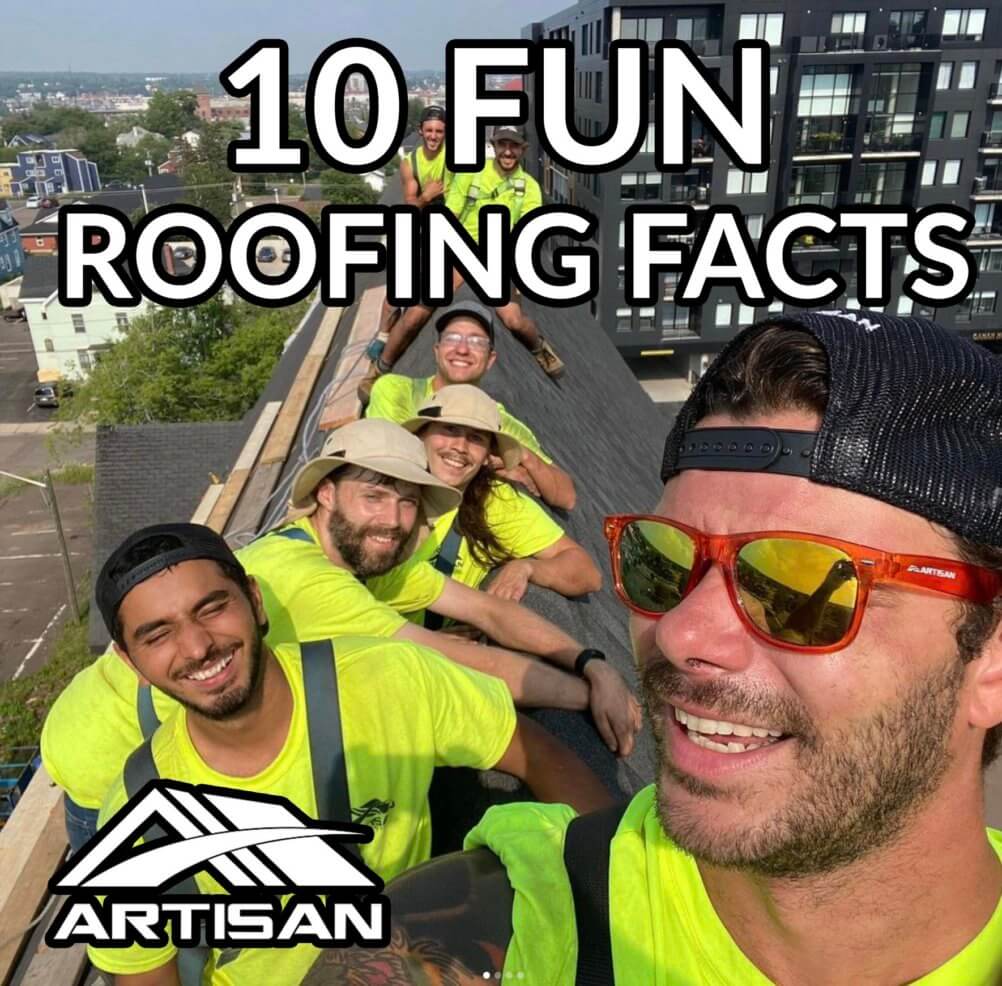Every day, you see your roof. Every day, you view your neighbour’s roof. Every day, you see dozens, if not hundreds, of roofs.
But what you don’t realize just by looking at them is that the average roofing system is extremely complicated, uses some of the most cutting-edge technologies in the building business, and conceals a slew of “trade secrets.”
We’re removing the curtain (or shingles, in this case) and presenting ten roofing facts that may surprise you.
-
The type of roof you should get is determined by where you live.
It’s a roofing fact: various roof styles are better suited to specific regions and climates. Gable roofs, which are made up of two triangles joined at a 90-degree angle, are suitable for colder, snowier locations or when homeowners want to add attics or vaulted ceilings.
Hipped roofs are more wind resistant than gable roofs, as they feature four equal-length slopes on all four sides that meet at the top to form a ridge. They may function well in windy places.
Flat roofs allow water to collect more easily, so this style of roofing system may be better in a drier, less rainy region. -
Flat rooftops aren’t exactly that.
Don’t let the name deceive you. Roofs aren’t completely flat. They actually have at least 1/4″ per-foot slope. -
There’s a lot more to a roof than shingles and wood.
There are, at minimum, seven essential components to an effective roof system. The roof decking, for example, must support the entire weight of the roofing system. The ice or water barrier is then applied to help prevent damage from ice damming. A waterproof or water-resistant underlayment is also required on a roof to protect the deck from moisture intrusion. Then there’s metal flashing, which ensures water runs down the sides, and a drip edge, which serves the same purpose. Finally, shingles are required on a roof. Remember the ventilation system, which includes the soffits, eaves, and vents that allow air to circulate. -
It’s not a good idea to put a new roof on top of an old one.
While double-layered roofs may appear to be a low-cost, quick answer for a roofing problem, they might conceal major roofing issues that must be addressed. A double-layered roof also adds weight and simply conceals the corroding material, allowing the problem to worsen. If you have previously put roofing materials on top of your existing roof, you should replace the entire roof as quickly as feasible. -
You can’t DIY a roof.
Yes, it seems to run counter to what all the DIY programs tell you. The true roofing fact is, a roof is actually a complex system of layers that require proper installation from skilled professionals with the right training and tools to ensure it all works together correctly. Going the DIY route can result in damage to your attic, walls, wood frame, and even electrical systems. -
Roofs are able to breathe.
A roof, as absurd as it may seem, requires air. One of the most important aspects of the entire roof system is roof ventilation, or the flow of air on the bottom of a roof deck. Warm, moist air escapes through the roof vents, while colder, dry air enters the attic. Condensation will form in your attic if there isn’t enough ventilation, causing damage to the walls, wood, and insulation. -
A roof can be environmentally friendly.
Environmentally friendly or “cool roofs” reflect the sun’s infrared and ultraviolet rays away from the building and have a higher thermal emittance, or ability to emit radiation efficiently. Cool roofs, according to the EPA, not only help households save energy, but they also help to reduce air pollution and greenhouse gas emissions by reducing heat radiated into the atmosphere. -
There are firms that specialize in roof cleaning.
It’s common knowledge that keeping your roof clean and free of moss, algae, and fungus/lichen is crucial, but did you know there are specialists who specialize in roof cleaning? They use sophisticated equipment that doesn’t destroy shingles and biodegradable cleaning chemicals that are less hazardous to plants and the environment to accomplish this. -
A defective roof can make or break the sale of a home.
When it comes time to sell your home, a new roof can be a huge selling point. A roof with leaks, missing or broken shingles, or other visible symptoms of decay, on the other hand, can drive a potential buyer away. A new homeowner’s last want is to spend money on a pricey roof replacement. It is far preferable to replace your roof before selling your home. -
My roof is indestructible.
It’s almost there, but it’s not quite there. The materials used and how well they are installed determine how long a roof will last. A modest 3-tab shingle roof may have a 20- to 25-year warranty. Shake-style shingles come with a 50-year warranty. Artisan Roofing’s Golden Pledge warranty, which is transferable to future homeowners, will cover the replacement of the complete roof if any manufacturer’s defects emerge within the following 50 years.
Need a new roof?
Contact Artisan Roofing Inc. by calling (506)50-ELITE or contact the team online to get a price, schedule a free, virtual estimate or find answers to any home roofing questions. We build trust and peace of mind into every Artisan roof.

